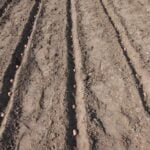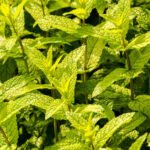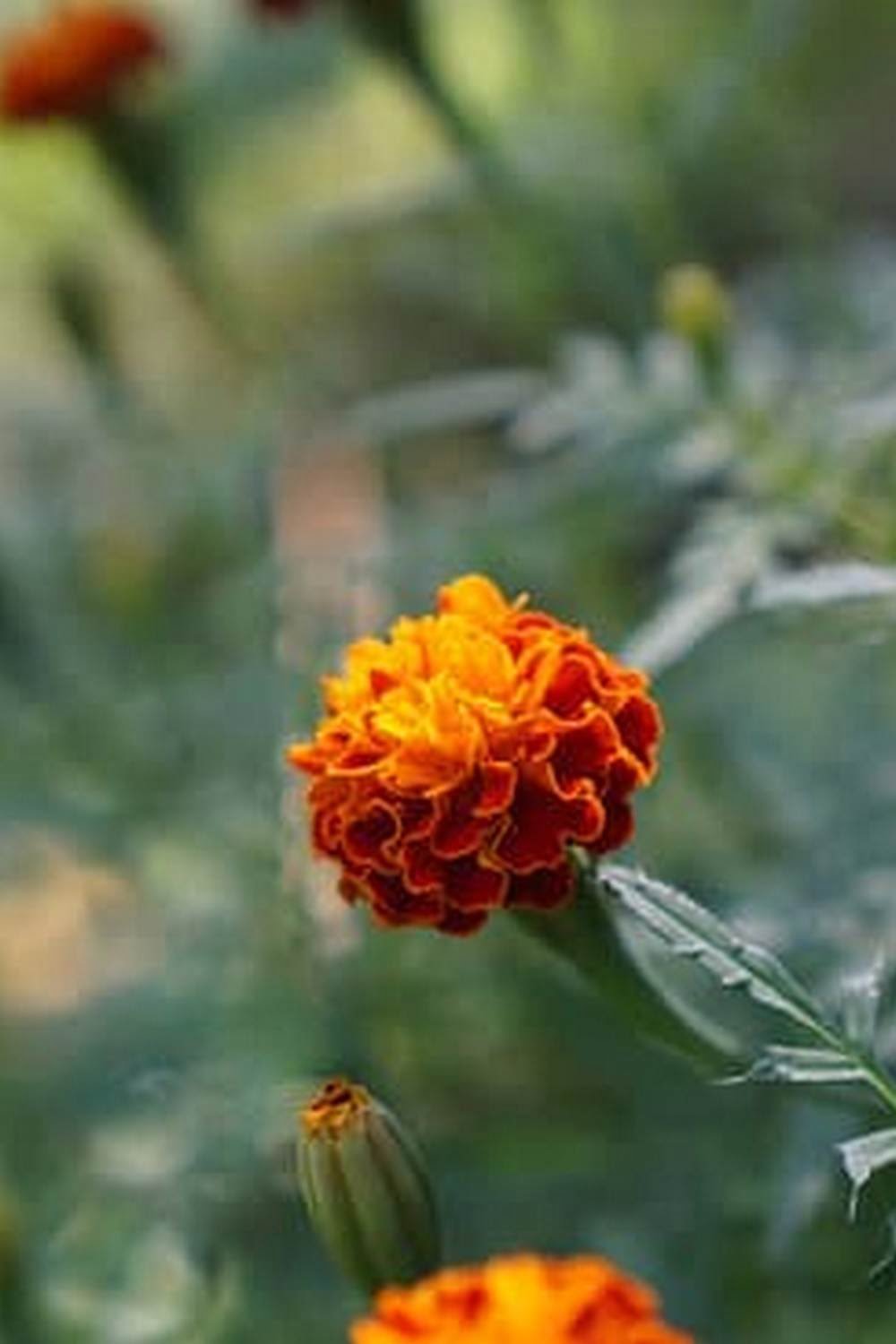Anchorage, Alaska is a city known for its stunning natural beauty and unique climate, making it an interesting place for vegetable gardening. With its cold temperatures and short growing season, Anchorage presents both challenges and opportunities for those interested in cultivating their own fresh produce. In this article, we will explore the specific conditions of Anchorage’s climate and growing season, as well as the unique challenges and opportunities for vegetable gardening in this region.
Anchorage, Alaska experiences a subarctic climate with long, cold winters and relatively short, cool summers. These conditions create a unique set of challenges for vegetable gardening.
However, with careful planning and consideration of the local climate and soil conditions, it is possible to have a successful vegetable garden in Anchorage. Throughout this article, we will discuss recommended vegetables for the short growing season in Anchorage as well as strategies for extending the growing season using greenhouses, cold frames, and row covers.
One of the key factors to consider in vegetable gardening in Anchorage is choosing the right vegetables that can withstand the cold temperatures. It is crucial to select vegetables that are well-suited for the local climate and have a shorter maturity period.
Additionally, proper soil preparation is essential to ensure optimal vegetable growth. In the following sections, we will delve into various aspects of preparing the soil, planting and maintenance tips specific to Anchorage’s climate, as well as harvesting and preserving techniques tailored to maximize the shelf life of home-grown vegetables.
Choosing the Right Vegetables for Anchorage, Alaska
Anchorage, Alaska has a unique climate that presents both challenges and opportunities for vegetable gardening. With its short growing season and cold temperatures, gardeners in Anchorage need to carefully select the right vegetables to ensure a successful harvest. When choosing vegetables for Anchorage, it’s important to consider their ability to withstand the cold and their suitability for the short growing season.
Some of the recommended vegetables for Anchorage, Alaska include cold-hardy varieties such as leafy greens (lettuce, spinach, kale), root vegetables (carrots, beets, radishes), and brassicas (broccoli, cabbage, Brussels sprouts). These vegetables are able to tolerate the cooler temperatures and have a shorter maturity period, making them ideal choices for Anchorage’s growing conditions. Additionally, crops like potatoes and peas can also thrive in Anchorage’s climate.
In order to select vegetables that can withstand the cold temperatures in Anchorage, gardeners should look for varieties that are specifically bred for northern climates. These varieties are better adapted to the challenges presented by low temperatures and have a higher likelihood of success in an Anchorage vegetable garden.
Some examples of these are ‘Alaska’ peas or ‘Arctic King’ lettuce which are suited for short seasons and cold weather. By choosing these types of vegetables, gardeners can increase their chances of a bountiful harvest in Anchorage.
| Recommended Cold Hardy Vegetables | Specific Varieties |
|---|---|
| Lettuce | ‘Arctic King’ |
| Spinach | ‘Space’ Spinach |
| Carrots | ‘Napoli’ |
| Broccoli | ‘Green Magic’ |
Preparing the Soil for Vegetable Gardening
Anchorage, Alaska’s unique climate and growing conditions present both challenges and opportunities for vegetable gardening. The soil in Anchorage tends to be dense and compacted, with low nutrient levels. It is essential to prepare the soil properly to provide an optimal growing environment for vegetables. The first step in preparing the soil is to test its pH levels and nutrient content.
According to the University of Alaska Fairbanks Cooperative Extension Service, the ideal pH level for vegetable gardening in Anchorage is between 6.0 and 7.0. If the pH is too low, adding lime can help raise it to the appropriate level. Additionally, incorporating organic matter such as compost or well-rotted manure into the soil can improve its structure and nutrient content.
Proper drainage is also crucial in Anchorage’s climate, especially during the spring thaw when excess water can lead to root rot and other issues. Adding organic matter can help improve soil drainage and reduce compaction. Consider raised bed gardening as a strategy to improve soil drainage while also capturing heat from sunlight to warm the soil more quickly in the spring.
| Aspect | Description |
|---|---|
| pH Levels Testing | Aim for a pH level between 6.0 and 7.0. |
| Organic Matter | Add compost or well-rotted manure to improve soil structure and nutrient content. |
| Drainage Improvement | Incorporate organic matter to increase drainage and consider raised bed gardening. |
By following these tips for preparing the soil for vegetable gardening in Anchorage, Alaska, gardeners can create a suitable environment for their crops to thrive despite the region’s challenging climate. Properly prepared soil will provide essential nutrients, good drainage, and a balanced pH level necessary for successful vegetable growth in Anchorage’s unique conditions.
Extending the Growing Season in Anchorage, Alaska
Strategies for Extending the Growing Season
One of the biggest challenges for vegetable gardening in Anchorage, Alaska is the short growing season. However, gardeners in Anchorage have found several effective strategies for extending their growing season. Greenhouses are a popular option for protecting plants from the cold temperatures and allowing them to thrive in a controlled environment.
Cold frames, which are similar to mini greenhouses, can also be used to provide protection for vegetables. Additionally, row covers made of lightweight fabric can be employed to shield young plants from frost and wind.
Protecting Vegetables From Frost and Cold Temperatures
A key consideration for gardeners in Anchorage is protecting their vegetables from frost and cold temperatures. Utilizing proper mulching techniques can help conserve soil moisture and keep root systems insulated during chilly nights. In addition, using frames or cloches around individual plants can offer targeted protection from frost. For larger crops, such as tomatoes or peppers, creating microclimates within the garden – through techniques like grouping plants together or planting against warm structures – can help safeguard delicate vegetables.
Season Extension Techniques
In Anchorage’s challenging climate, mastering season extension techniques is vital for successful vegetable gardening. Floating row covers made of fabric provide insulation while allowing sunlight penetration and easy moisture access. Using black plastic mulch can aid in warming soils and promoting early spring growth by absorbing heat during sunny days.
Creating windbreaks with barriers like fences or shrubs can reduce exposure to harsh winds that may damage tender vegetation. By employing these methods, Anchorage residents are able to maximize their vegetable gardening efforts despite the limited growing season.
Planting and Maintenance Tips
When it comes to planting and maintaining a vegetable garden in Anchorage, Alaska, there are some unique factors to consider due to the city’s northern location and cooler climate. However, with the right strategies and practices, it is still very much possible to have a successful vegetable garden in this area.
Here are some essential planting and maintenance tips for vegetable gardening in Anchorage, Alaska:
- Choose cold-hardy vegetables: Given Anchorage’s short growing season and cool temperatures, it’s important to select vegetables that can withstand the cold. Some recommended options include carrots, kale, radishes, and spinach. These vegetables have a better chance of thriving in Anchorage’s climate.
- Start seeds indoors: To get a head start on the growing season, consider starting your vegetable seeds indoors before transplanting them outside. This can help give your plants a boost and extend their growing time.
- Protect from wildlife: In Anchorage, Alaska, wildlife such as moose and rabbits can pose a threat to your vegetable garden. Consider installing fences or using other methods to protect your crops from being eaten or trampled by local wildlife.
In addition to these tips, proper watering and fertilizing are crucial for the health of your vegetable garden in Anchorage. The cooler temperatures may require less frequent watering but be sure to monitor the soil moisture levels regularly. Additionally, using organic fertilizers can help provide the necessary nutrients for your crops without harming the environment.
By following these planting and maintenance tips specific to Anchorage, Alaska vegetable gardening, you can increase your chances of having a successful harvest despite the unique challenges posed by the city’s climate.
Harvesting and Preserving Vegetables in Anchorage
Recommendations for Harvesting Vegetables
Anchorage, Alaska’s short growing season means that timing is crucial when it comes to harvesting vegetables. It’s important to monitor the development of your vegetables closely and harvest them at the right time to ensure optimal flavor and quality.
Additionally, due to the cooler temperatures, vegetables may take longer to reach maturity, so patience is key. Some commonly grown vegetables in Anchorage, such as carrots and potatoes, can even be left in the ground until needed during the winter months.
Tips for Preserving Vegetables
Preserving the harvest is essential for extending the enjoyment of your homegrown vegetables throughout the year. In Anchorage, where the growing season is especially short, preserving vegetables is a valuable skill. Common methods for preserving vegetables include canning, freezing, pickling, and dehydration. Canning and freezing are popular options for preserving large quantities of produce, while pickling offers a way to enjoy vegetables with added flavor. Dehydration can be especially useful for preserving herbs or making vegetable chips.
Maximizing Shelf Life
Properly storing harvested vegetables is crucial for maximizing their shelf life. This is particularly important in Anchorage due to its lengthy winters when fresh produce may not be readily available. Storing root vegetables such as potatoes and carrots in a cool, dark place like a root cellar can help prolong their freshness.
Leafy greens like kale and Swiss chard should be stored in the refrigerator with their stems placed in water to keep them crisp. Learning how to preserve and store your harvested vegetables will allow you to enjoy your homegrown produce well beyond the growing season.
Success Stories From Anchorage Vegetable Gardeners
One of the most inspiring aspects of vegetable gardening in Anchorage, Alaska is the success stories from local gardeners who have defied the odds of the challenging climate and growing conditions. Despite the short growing season and cold temperatures, many Anchorage residents have managed to cultivate a variety of vegetables in their gardens. Their stories serve as a testament to the opportunities and rewards that come with vegetable gardening in this unique environment.
To gain insight into these success stories, we reached out to several experienced Anchorage vegetable gardeners for their tips, insights, and words of encouragement. Here are some of their key takeaways and recommendations:
- Start with cold-hardy vegetables: Many successful Anchorage vegetable gardeners recommend starting with cold-hardy vegetables such as kale, Swiss chard, carrots, and radishes. These vegetables can withstand the cooler temperatures and shorter growing season in Anchorage.
- Utilize season extension techniques: Several gardeners emphasized the importance of utilizing season extension techniques such as greenhouses, cold frames, and row covers. By using these methods, they were able to protect their crops from frost and extend the growing season, allowing for a greater variety of vegetables to be grown.
- Embrace community collaboration: Some gardeners highlighted the benefits of joining local gardening clubs or community gardens. By collaborating with fellow gardeners, they were able to share resources, knowledge, and support each other through the challenges of vegetable gardening in Anchorage.
By learning from these success stories and implementing their proven strategies, aspiring vegetable gardeners in Anchorage can increase their chances of thriving in this unique environment. With dedication, patience, and a willingness to adapt to the conditions, it is possible to achieve bountiful harvests and enjoy the rewards of homegrown vegetables in Anchorage, Alaska.
Resources for Anchorage, Alaska Vegetable Gardeners
In conclusion, vegetable gardening in Anchorage, Alaska presents unique challenges and opportunities due to the city’s climate and growing conditions. The short growing season and cold temperatures require careful selection of vegetables, proper soil preparation, and strategies for extending the growing season. Despite these challenges, many Anchorage residents have successfully grown their own vegetables and have shared their insights and tips for beginner gardeners.
One of the key factors in successful vegetable gardening in Anchorage is choosing the right vegetables that can withstand the cold temperatures and short growing season. Cold-hardy vegetables such as kale, spinach, carrots, and radishes are recommended for Anchorage gardeners. It is important to select varieties that have a shorter maturity period to ensure a successful harvest before the first frost.
In addition to selecting the right vegetables, proper soil preparation is crucial for vegetable gardening in Anchorage. Improving soil quality and drainage can significantly impact vegetable growth and yield. Some local gardening clubs and resources in Anchorage offer advice on soil preparation techniques specific to the area’s climate. Overall, with careful planning, preparation, and utilizing resources available in Anchorage, Alaska vegetable gardeners can overcome the challenges of the climate and grow a successful garden.
Frequently Asked Questions
What Vegetables Grow in Anchorage Alaska?
In Anchorage, Alaska, vegetables like potatoes, carrots, kale, and cabbage can thrive in the cooler climate. Other options include broccoli, peas, radishes, and lettuce.
Can You Have a Vegetable Garden in Alaska?
Yes, it is possible to have a vegetable garden in Alaska with proper planning and attention to the unique growing conditions. Gardeners may need to use greenhouse or cold frame gardening techniques to extend the growing season.
When Should I Start My Garden in Alaska?
In Alaska, the best time to start a garden depends on the specific location within the state. Generally, gardeners can start planting as early as mid-May in some areas, while others may have to wait until early June due to lingering frost. It’s important to check local gardening guidelines for specific timing recommendations.

If you’re looking to get into vegetable gardening, or are just looking for some tips on how to make your current garden better, then you’ve come to the right place! My name is Ethel and I have been gardening for years. In this blog, I’m going to share with you some of my best tips on how to create a successful vegetable garden.





